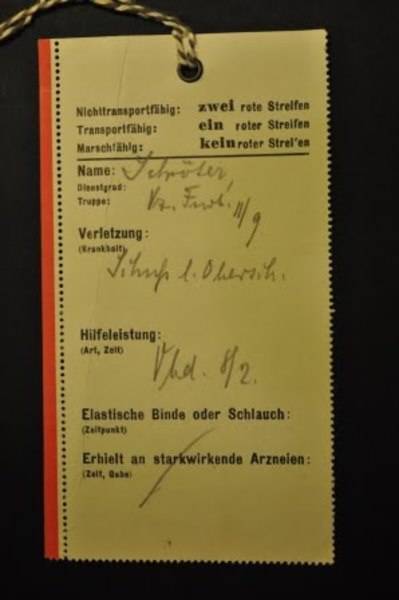The European project, “First World War in everyday documents” has combined real people and the physical artifacts they’ve inherited with the power of the Web to preserve and communicate on a mass scale. This effort has the potential to bring back into focus a horrendous period of time that, almost 100 years later, is often regarded with a soft focus. Real people lived, killed, died and suffered through the first global conflict in history and now they are regarded as Edwardian ornaments for a sentimentalist view of history that disgraces their sacrifice.

Run by Europeana, the European archive, the project began in March and will end in July. It combines online uploading with real-life roadshows to assemble an enduring, highly-personalized Web archive of the war.
Europeana explained the inspiration and goals of the project.

“The First World War archive is based on an initiative at the University of Oxford where people across Britain were asked to bring family letters, photographs and keepsakes from the War to be digitised. The success of the idea – which became the Great War Archive – has encouraged Europeana, Europe’s digital archive, library and museum, to bring the German National Library into an alliance with Oxford University to roll out the scheme in Germany. The collaboration will bring German stories online alongside their British counterparts in a 1914-18 archive.”
At the roadshows – still to be held at Dresden, Kiel and Regensburg – the objects brought are digitized on the spot.
The archive is already up and running and you can use their search page to look for specific artifacts or types of artifacts or images.
Among the objects already digitized, the editors point out a “delousing chit” (above).

“Looking rather like a cartoon bank note this informed the bearer that he was now clean and free of the vermin of the trenches. Most likely a completely unofficial document, this comic piece of memorabilia was probably limited to one unit, and may therefore be quite uncommon. However it is also good documentary evidence of the cleaning up process, soldiers being communally bathed, or perhaps more accurately dunked and rubbed down, in disused breweries, or washed by the efforts of mobile bath units with their own traveling water heater.”
Another is the heart-breaking “red stripe” card. When a medic triaged an injured soldier, he affixed a card to the person. The cards were no-stripe, for walking wounded; a single stripe for the seriously injured but movable; and two stripes for too seriously wounded to be moved and likely to die. The one to the right, with one stripe, belonged to a soldier named Schroeder.
Europeana is partnering with Oxford University and the German National Library. So far, over 350 people have attended the roadshows and more than 15,000 objects have been digitized.

















